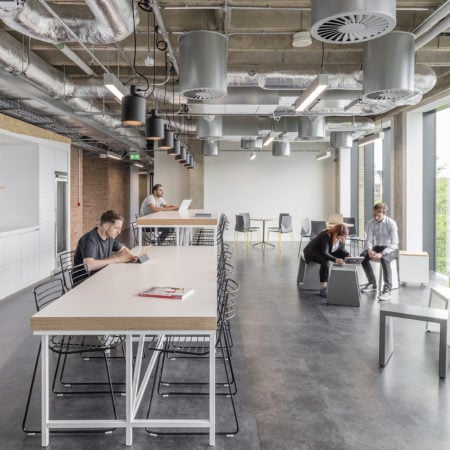While the Government’s encouragement to get people back into offices may have been short-lived – and now put on ice – it gave many employers a valuable opportunity to both trial new Covid-secure strategies and test the water in terms of employee appetite to get back to their (sanitised and socially distanced) desks.
You didn’t have to look very far to see the uptake was underwhelming – with large swathes of city centres and corporate workspace remaining grimly desolate.
So how do we ensure that the post-Covid workplace is not only safe, but fundamentally attractive to employees?
Because the truth is that getting ready for the office return needs to be about much more than taking out desks and putting up one-way signage. Occupiers have been, quite rightly, concerned about getting the practicalities right and working through the logistics of how people can travel in lifts, buy their coffees, grab lunch and go to the bathroom in a way that is Covid-secure and follows government guidance.
But the businesses who will succeed in the next phase of transition will be those who really look at the employee experience. Because that is what will ultimately entice people to don their face coverings and take up the commute again – not strict adherence to health and safety, however vital that may be during a pandemic.
“The onus on employers now is to create a sense of place, brand and belonging in the era of social distancing. ”
You don’t need to have set foot inside a commercial office building since March to understand that the difference facing workers is stark. Emptier, quieter offices can easily feel impersonal and sterile. And it’s likely that people are feeling more anxious or stressed day-to-day, which impacts productivity and the office atmosphere. The onus on employers now is to create a sense of place, brand and belonging in the era of social distancing.
There are plenty of affordable and nimble design adaptions that can help support a positive and enriching return to the office – from branding and graphics, to acoustics, lighting and catering. Occupiers who respond quickly, creatively and experiment will be most effective at getting people back through their door. Creating somewhere that delights and provides something different is key to enthusing people to get back to some semblance of pre-Covid normality and unlocking the productivity benefits and dynamism that comes with reconnecting with colleagues.
The overnight change in how we use our facilities is also an opportunity to completely re-assess their potential. If you’re serving fewer people in the canteen, why not shake things up by focusing on higher quality products? If lifts are out of action, how about transforming utilitarian staircases into inspiring spaces with branding and sparkle? And if an on-site gym is sitting underutilised, could that space be re-deployed to serve the community? Even mundane changes can be turned to the positive – rather than “do not use” signage, why not install planting on every other desk to create a green indoor landscape?
In the years to come, employers are going to have to focus more than ever before on creating a desirable, destination workplace and an environment that people want to be part of. We can’t put the genie of home working back in the bottle. Employers have seen that it can work effectively, and employees’ demands and expectations have evolved. Covid-19 has done in six months what would have taken years. Hybrid working is here to stay, and when it comes to preparing offices for the eventual restart, the smart employers are the ones playing the long game.

This article is by John Avery
John is an award-winning architect who has contributed to the success of a wide range of projects with the practice including large-scale architectural commissions, interior design projects, strategic planning and branding initiatives.



